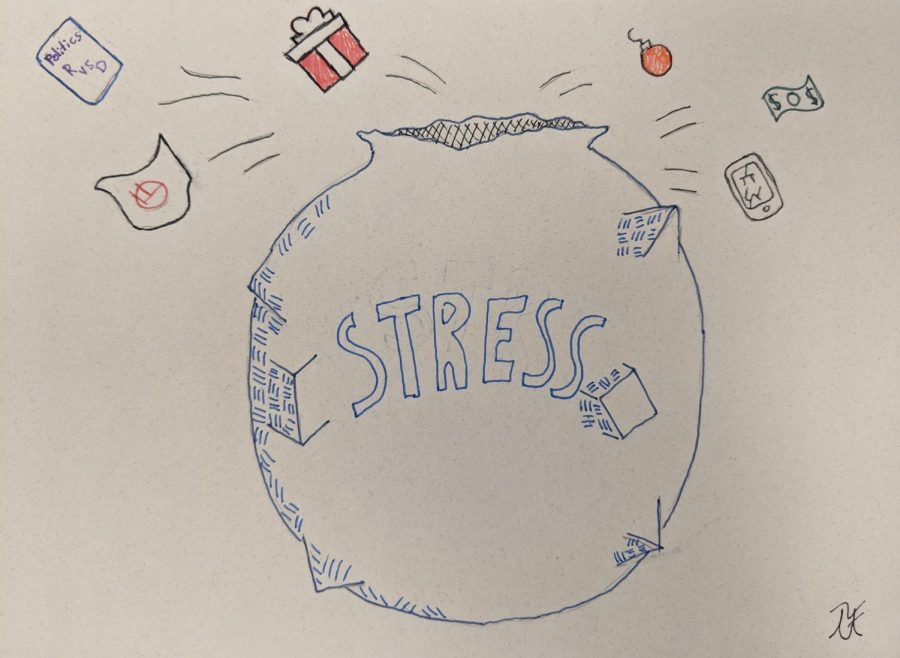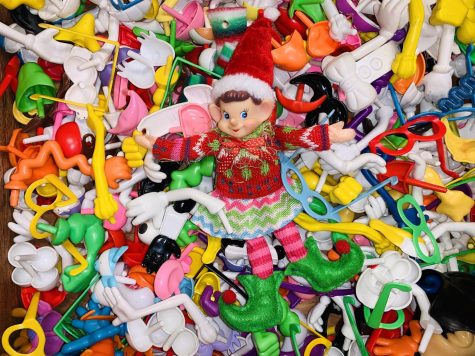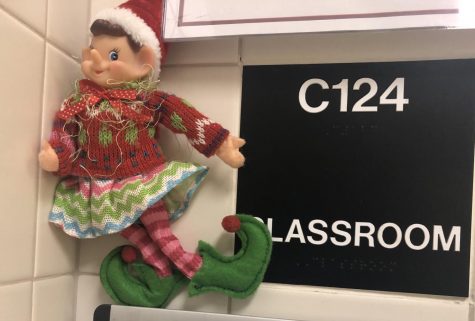Winter break: It’s not always the most wonderful time of the year
Instead of toys in Santa’s bag, it’s causes of holiday stress.
December 18, 2019
At first glance, the holiday season might seem like a period of happiness and rest, particularly for students and teachers who have almost two weeks of winter break. But underneath lies the looming shadow of heightened stress and anxiety for students and staff
In fact, a poll conducted by the American Psychological Association shows that nearly a quarter of Americans feel “extremely stressed” during the holidays, and a survey from Think Finance shows that almost half of Christmas-celebrating Americans would rather skip Christmas.
“I get stressed during the holidays trying to find the perfect present, spending too much money, the classwork I’m assigned over break, and the tests I have to take right before break,” said junior Maya Apau, who celebrates Christmas.
All of the testing and assessment just before break doesn’t help either. Apau currently has two major tests scheduled before break: one in AP Psychology and one in math.
Each year, students deal with a variety of stressors that are often exclusive to December and January. These not only include classwork, financial pressure, and the Seasonal Affective Disorder that so many people suffer from, but also travel, work, and time spent with family. The latter can be especially nerve-wracking for those who experience conflict within their families.
“I think some kids don’t have great family situations, and so they don’t want to spend time with their family; they want to be with their friends at school. School is a safe place for them,” said social studies teacher Jamie Hendi. “Nobody should ever assume that ‘oh, this is a break; it’s going to be awesome,’ because it’s not necessarily that way for a lot of kids.”
In fact, statistics show that approximately half of all North American children will see the divorce of their parents before they are 18 years old. The holidays mean that many of these students will visit with the non-custodial parent. Depending on the circumstances, this can have high or low expectations.
Winter break is also a time when siblings who are in college typically come home, which can disrupt a student’s routine. Parents may be more focused on these siblings, or students may be spending more time with sibling(s) before they return to school.
This sort of stress can lead to behavioral problems, which tend to be on the rise in the weeks leading up to break. These often include restlessness and disruption in class, which can lead to a ripple effect among friends and classmates.
“Students deal with stress in different kinds of ways, maybe acting out during lunch or in the classroom,” said counselor Chris O’Brien. “[Students] are certainly being asked to come down and talk to us more so than during the rest of the school year.”
O’Brien recommends clear communication to alleviate tensions between students and teachers at all times of the year, but particularly during the holiday season.
This is especially important as it is not only students who feel the effects of holiday and break-induced anxiety. Many teachers are thinking about the end of the semester that approaches so quickly after winter break, or their own holiday activities with family and friends.
“[I stress about] having enough time for my lessons and making sure that the students stay on task,” said Spanish teacher Leanne Pupo. “Holiday-wise, [it’s about] making sure that everything is set up…that the kids have a tree and that we are decorating the tree too. If we have any visitors coming up, [we have to make sure] that the house is organized and clean. You’re trying to plan everything you want to do but still having time for the things you need to do.
Many students feel that teachers should go lighter on the school work the week before winter break, giving tests earlier so students aren’t worrying about keeping their grades up when there is so little time to do so after break.
Unfortunately, this may disrupt the pace of class, negatively impacting the retention of material, so a compromise must be reached. This middle ground may not even have to involve the assignments themselves, however.
For one thing, teachers can strive to develop and maintain strong relationships with students during the year so that communication is clear and concise. This also gives vulnerable students a support system that they can connect with during the holidays.
“My students can always message me on Schoology or…email me, and, as long as I have WiFi, I will always reply. I am always here for my kids, whatever they need,” said Hendi.
Not all teachers have the flexibility to share Hendi’s method, especially if they are busy during break, but they can still be available before and after the holidays for students to talk to if they have any issues or concerns.
And for both teachers and students, the best way to keep stress levels low in a school environment is to maintain clear and open communication.
“Hopefully teachers are letting students know where they stand in the class and helping them to utilize some of the time they have off. Collaborating with one another is…so important, whether you’re a teacher or student,” said O’Brien.














